Excerpt
“Verily, there is nothing so hideous as the monsters, so contrary to nature, known as witchers for they are the offspring of foul sorcery and devilry. They are rogues without virtue, conscience or scruple, true diabolic creations, fit only for killing. There is no place amidst honest men for such as they.”
– Monstrum, or a description of a witcher
Andrzej Sapkowski, Blood of the Elves [UK edition]
The title of this post is also the title of a lampoon on witchers, which appears on the pages of Blood of Elves – the first volume of The Witcher Saga by Andrzej Sapkowski. Some of you know the Witcher from a computer game or Netflix series. But it’s the Polish writer who’s responsible for the birth of Geralt of Rivia – a monsters’ slayer. It started modestly, with a short story that in the mid-1980s, Sapkowski, at the urging of his son, wrote for a competition organized by the cult Polish magazine “Fantastyka”. He took third place. Then Sapkowski wrote three collections of stories about the witcher, a five-volume saga and a handful of apocrypha.
Of course, Sapkowski’s books were published outside Poland, but Geralt became really famous in 2007 thanks to a computer game and in 2019 after the premiere of the series starring Henry Cavill.
As is usually the case in similar situations, the toy market reacted to Geralt’s appearance in broadly understood pop culture. In addition to the collectible figures that appeared with exclusive editions of the game, various action figures related to both the game and the series were also released.
Description of a witcher
Let’s go back to the early 2000s, when all of the above was floating freely in a great void of dreams and potential. The character of the Witcher was actually known mostly only in Poland and among a small group of readers abroad. At that time, the first series about Geralt apperead in Polish television. It was based on stories from the volumes The Last Wish and The Sword of Destiny. Moreover, a feature-length film was also made. Both projects suffered from one big problem: huge budget shortfalls. As a result, incomplete works were created, with poor special effects and the film also had a lot of plot holes, which made it understandable only to experts in Sapkowski’s work. In my opinion, the Polish adaptation of Witcher books made up for these shortcomings with its atmosphere [despite the underinvested set design and costumes] and acting. Most of the roles were played by leading Polish theater and cinema actors. And in my opinion they were cast pretty well.
Some people, including the undersigned, even prefer the Polish version from 23 years ago to the Netflix one.
Michał Żebrowski’s Geralt from years ago couldn’t expect such merchandising support as Geralt from the video game and Henry Cavill’s Geralt from the current series.
And yet he got his own figure. But certainly not the one he could have expected.
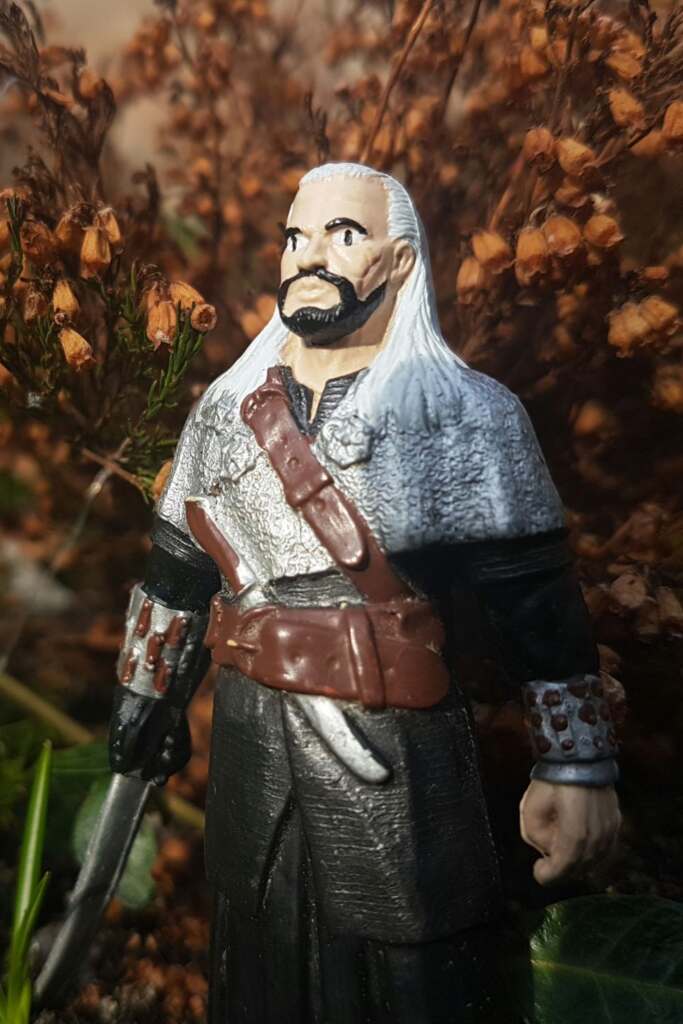
Monstrum
And it is the titular monster. At least for some. The Witcher figure, modeled on the role of Michał Żebrowski, was made by Evanplast company from Gdańsk. This name may be known to some Star Wars fans thanks to the bootlegs of Kenner figures that Evanplast mass-produced at the turn of the 1980s and 1990s in Poland. The Iron Curtain and lack of distribution led some people to take matters into their own hands. And since copyright protection was practically non-existent in Poland at that time, my country became a real galaxy of fake Star Wars figures, produced without a license. But that’s another story, which you can read e.g. here.
Evanplast also produced the Witcher, most likely also without a license. And as far as I know, this is the only figure of its kind. And one of a kind.
There are movies that are so bad that they are good, and there are things that are so ugly that they are beautiful. And such an example is Geralt of Evanplast.
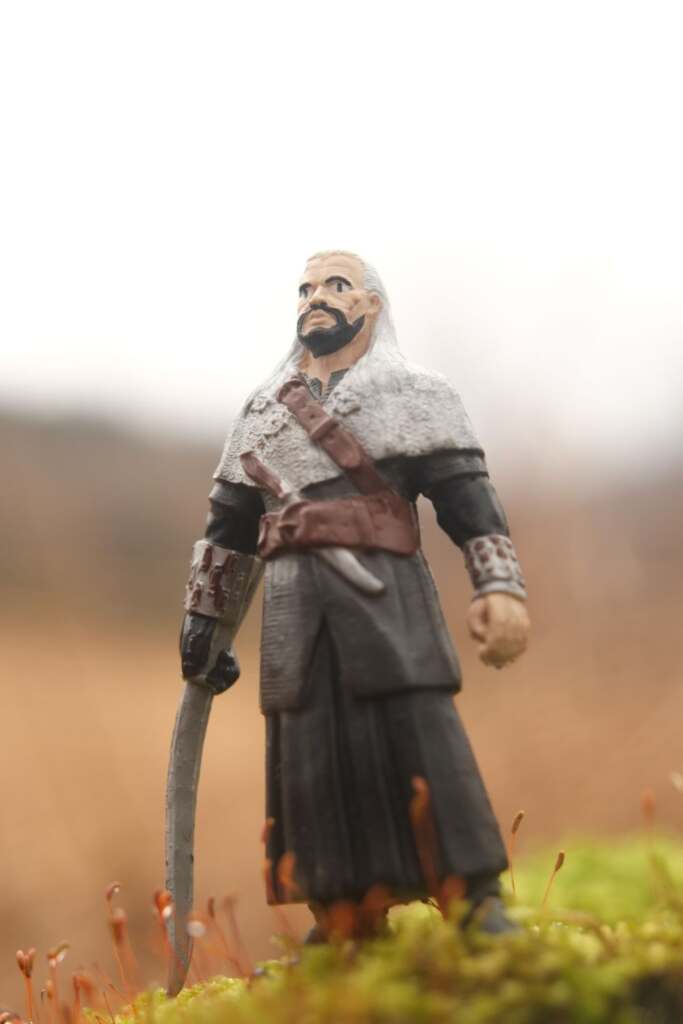
Cast from hard rubber, the figure has no points of articulation [except for the sword, which is soft and bends easily]. The character reproduction is not bad for a monolith, especially since, unlike Kenner’s counterfeits, there was nothing to base it on. So it is a fully original creation, although unlicensed.
Each figure is also unique because it’s hand-painted. Moreover, they have differently curved swords. And feet. However, it’s the eyes that attract the most attention. So far I have not been able to determine whether these are “normal” eyes or modified by potions that sharpen Geralt’s senses. Either way, it’s possible that the creators of this figure could have actually looked for inspiration in the volume of Monstrum, or a description of a witcher.
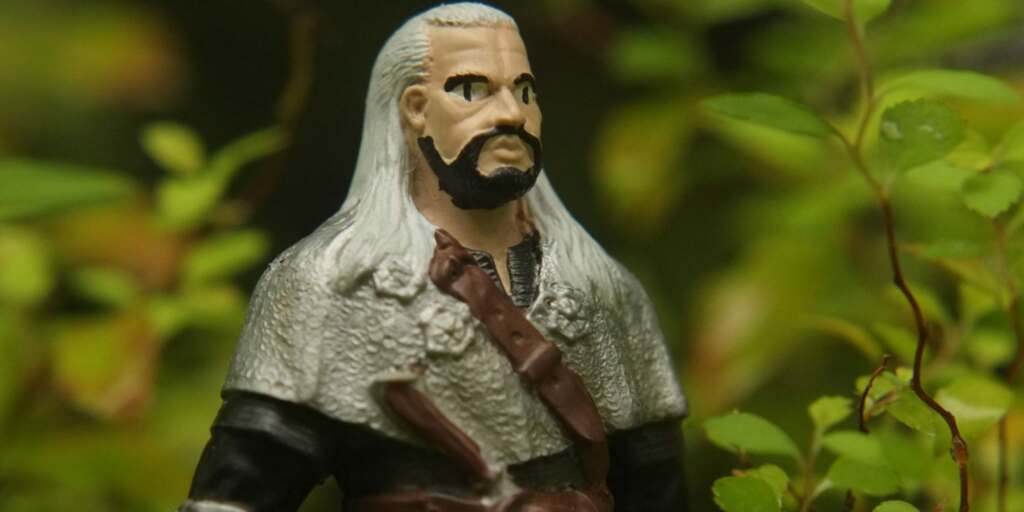
Monstrum in front of the lens
I rarely photograph figures that have no articulation at all. But here the lack of articulation is actually the least of the problems. Unlike figures photographed by e.g. Tom Milton, in Geralt’s case it’s clear at first glance that he is a toy. There isn’t even much room for the question of figure vs character. Here there is basically only a figure that we can try to give character to, mainly using the surroundings and light. Because let’s be honest, the creators of this figure didn’t give us much room to maneuver.
But these limitations not only pose a challenge but also allow us to play with the toy photography convention by radically [though unintentionally] emphasizing that it is a toy.
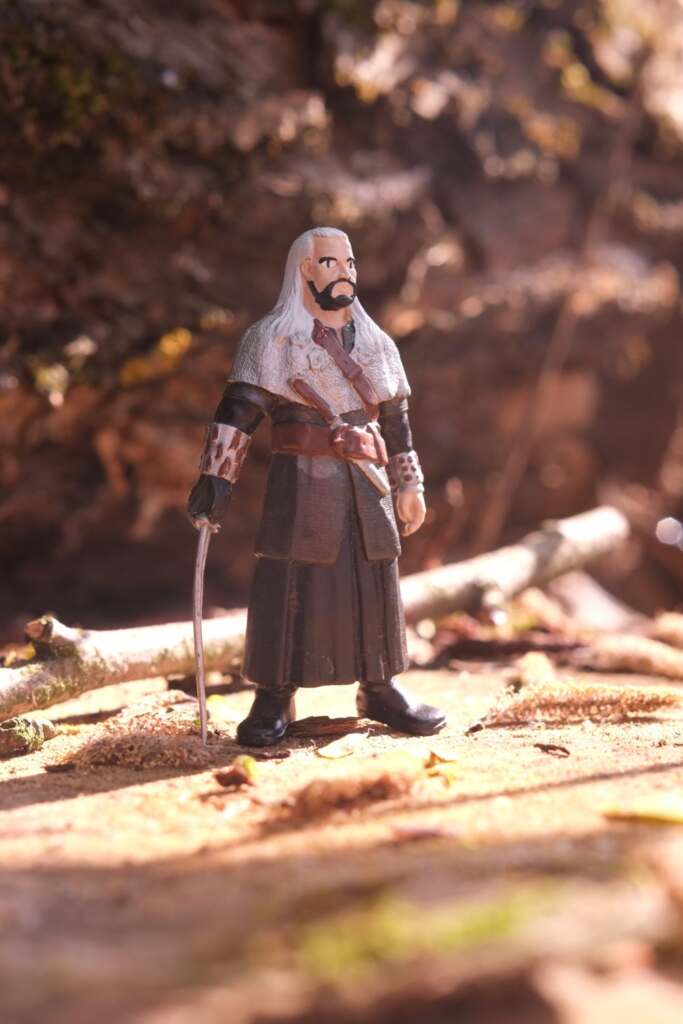
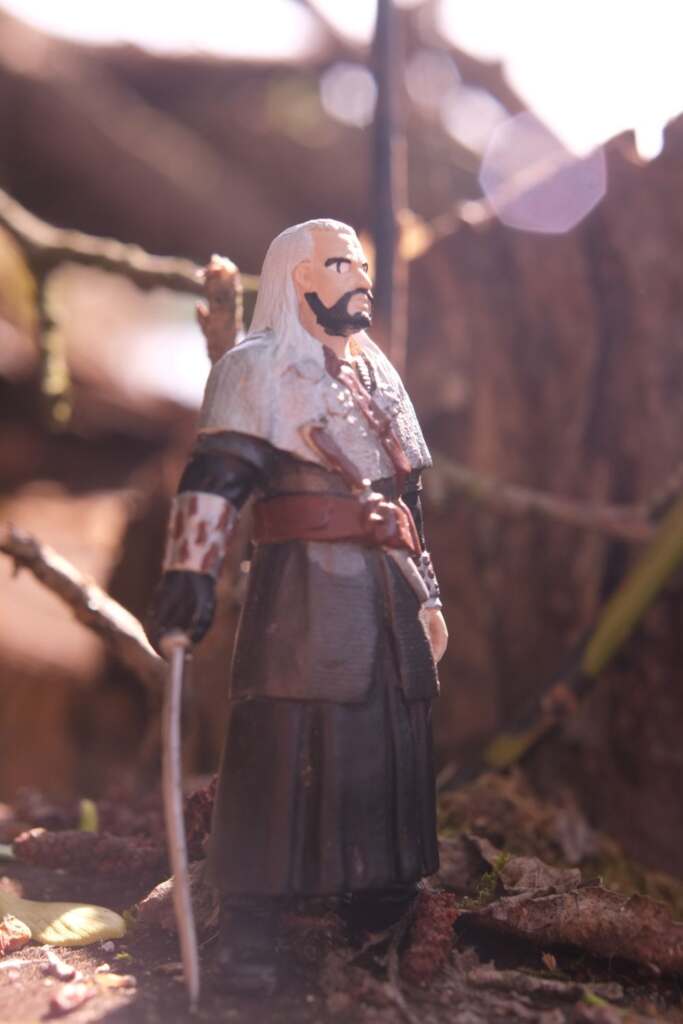
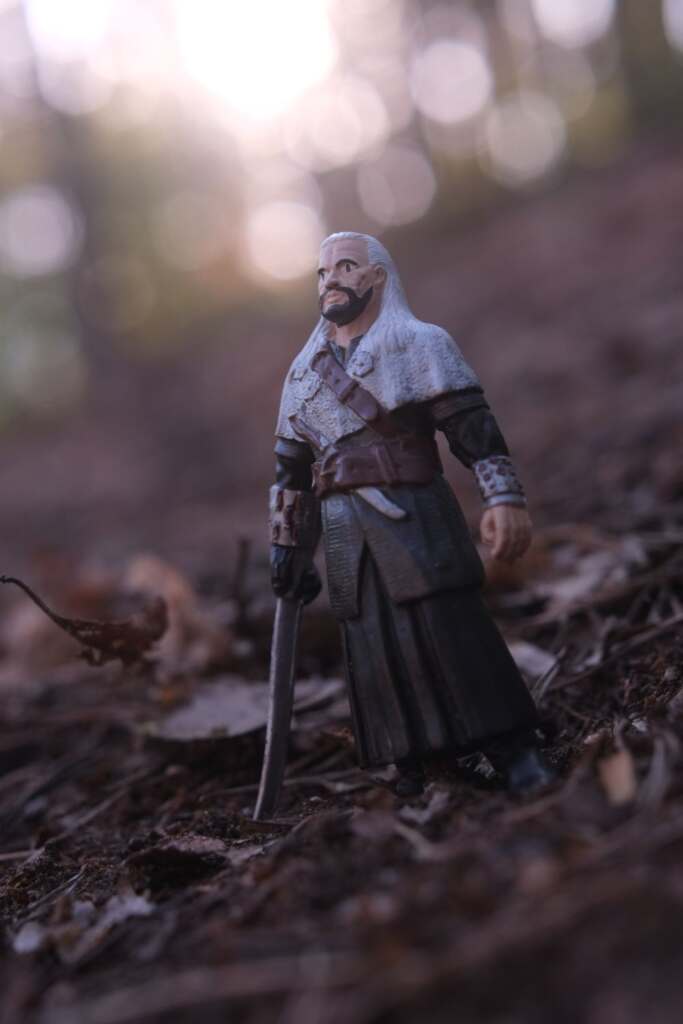
Witcher vol. 2
Evanplast’s Geralt certainly has his own, specific, but still charm. What if we tried to make this figure look like the on-screen original? I asked this question to my brother who took on the mission of repainting this figure. Here are the results:
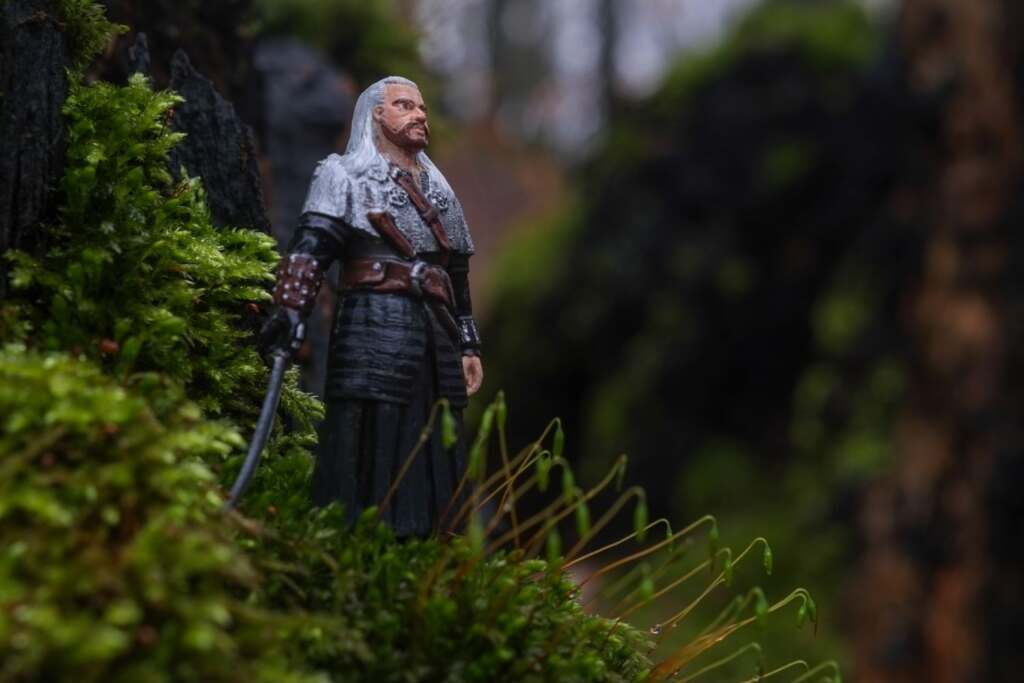
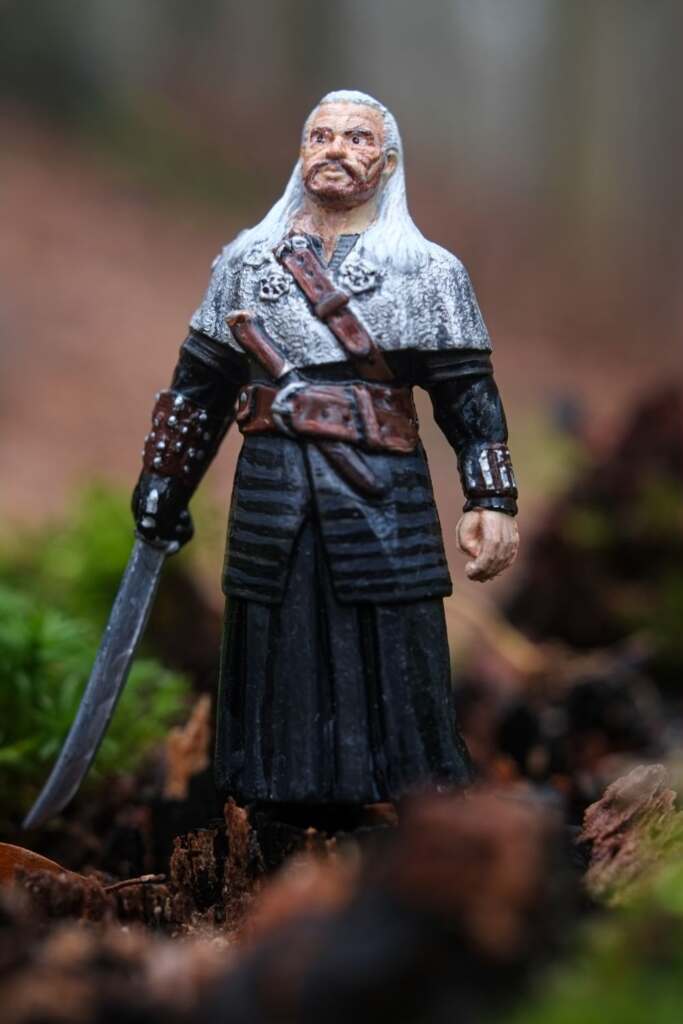
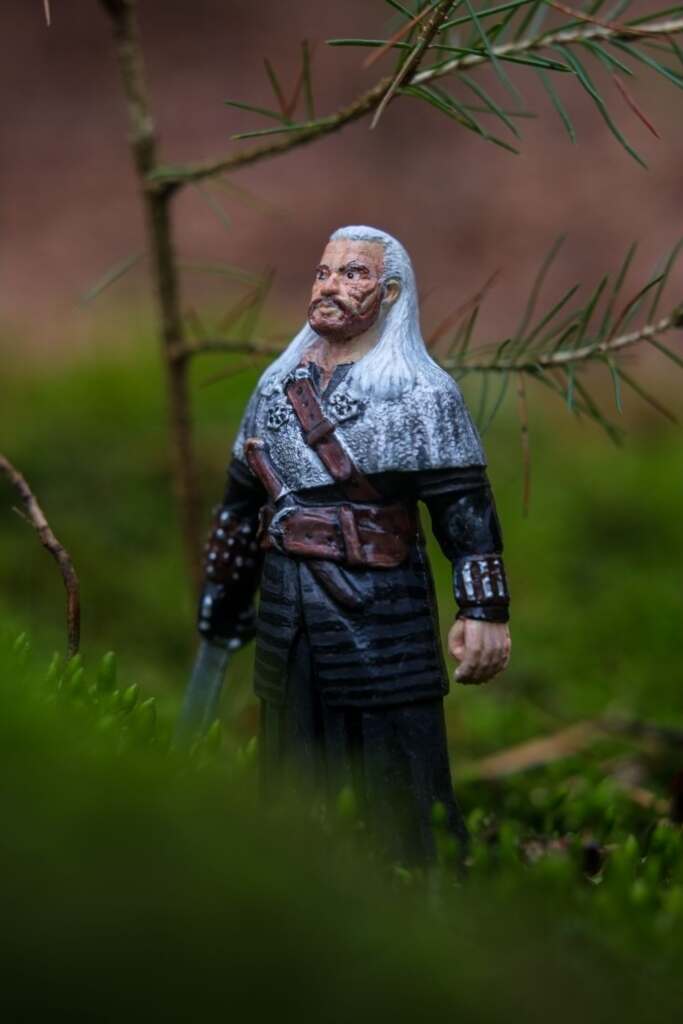
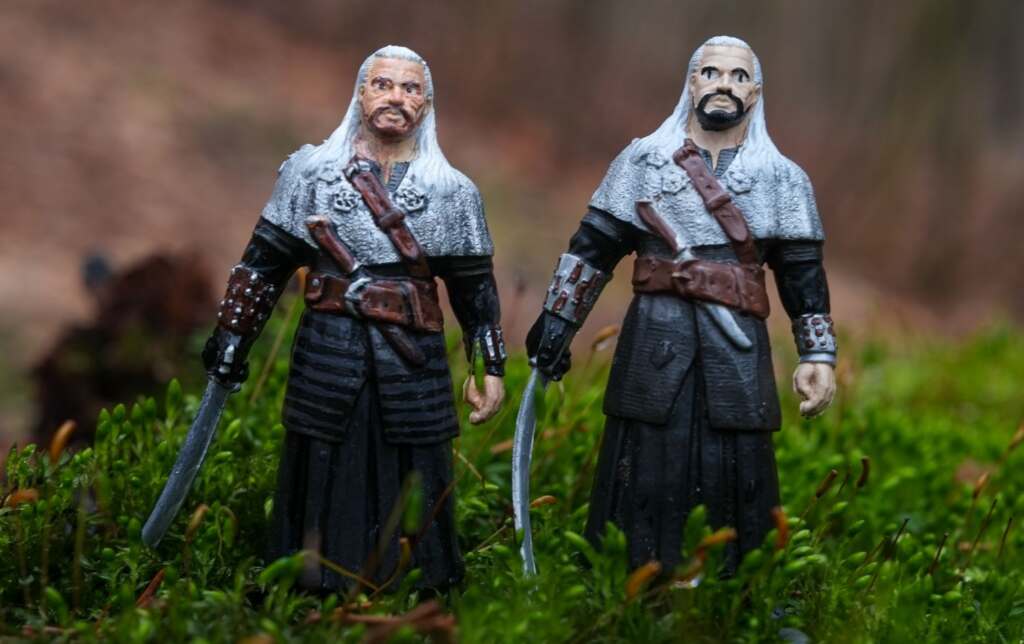
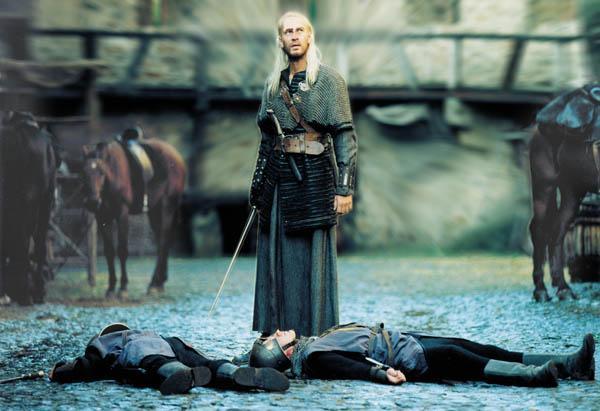
Conclusions
The Polish witcher figure, although extremely peculiar, is not the monster it seems, and certainly not as in the malicious description from the book Monstrum, or a description of a witcher.
Or maybe it’s just sentiment on my part and the figure is ugly.
Howdy! While you’re here, we invite you to sign up to our weekly Toy Photographers email roundup where you’ll get a recap of all the week’s babbling. And while you’re at it, you should definitely join our MeWe community! We hold monthly contests with prizes and lots of other cool stuff.


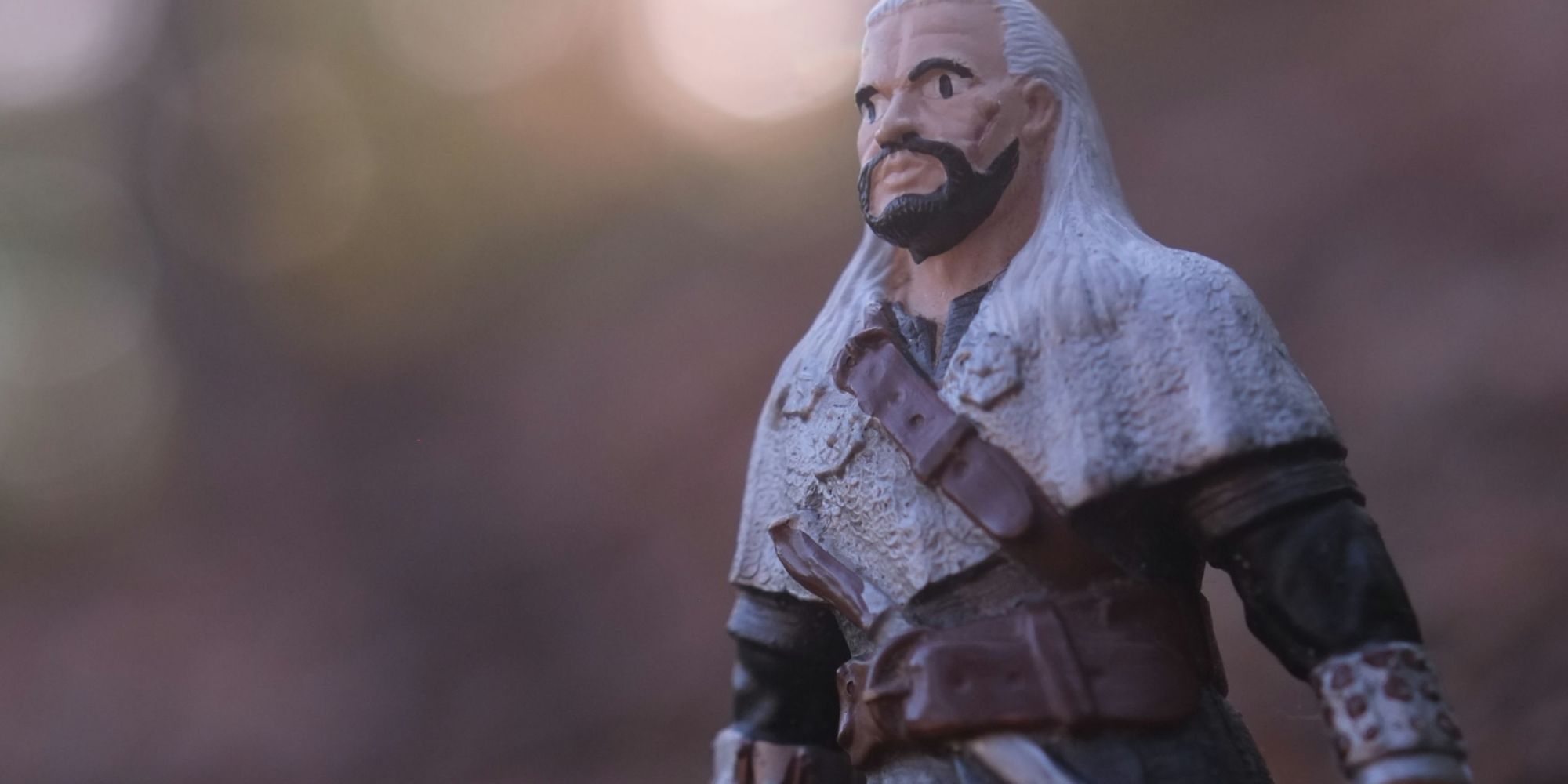
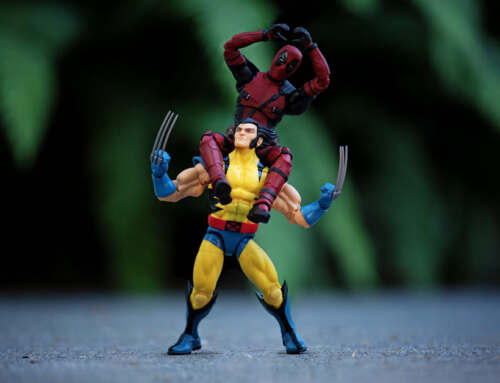
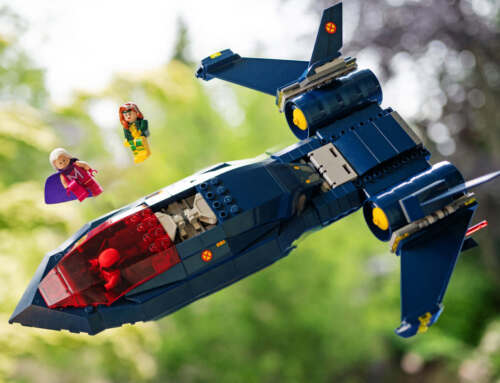
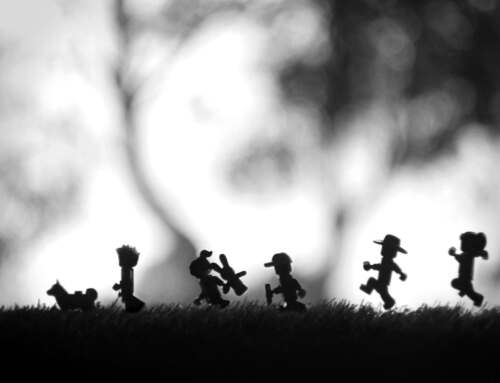
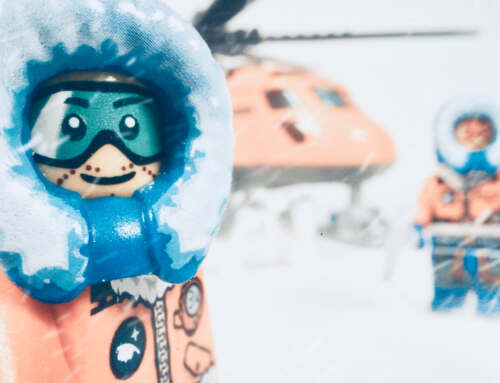
Thanks for this background on the Witcher and the toy. I love an opportunity to learn more about the background of these figures. Your brother did a great job on the repainting by the way!
Thank You Mary.
Funny thing is that I learned about this figure like few years ago 🙂
And I’m glad You like the paintjob!